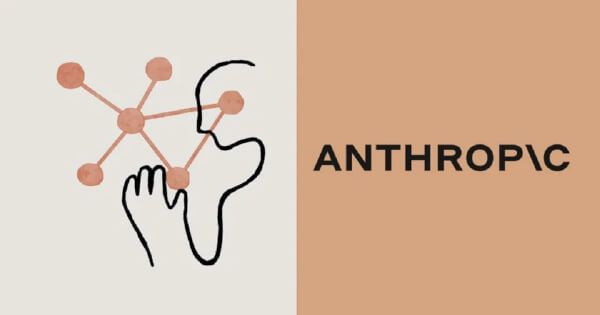
There is a new upgrade on the chain called Ethereum Shanghai. Is that bullish or bearish for Ether and the crypto market?
What is the next upgrade for Ethereum?
The Shanghai upgrade is a stepping stone toward making the Ethereum blockchain more scalable. Features like sharding, zero-knowledge (ZK)-SNARKs and more, decorate the Ethereum roadmap.
The EIPs included in the Shanghai upgrade will be a good step toward achieving sharding later in 2023. Sharding is extremely important to improve higher transaction throughputs as the chain will be able to perform “parallel processing.” Sharding is expected to be achieved in two stages in 2023 and 2024.
The first stage brings better data availability to the Ethereum blockchain. Combining that with the rollup feature that layer-2 chains like Polygon and Immutable X are able to perform could help achieve several thousand transactions per second on Ethereum.
There is still a debate as to whether the second stage should allow shards to be smarter with each of them holding their own smart contracts. This upgrade will also enable communication between shards. However, the precise nature of this stage is still under discussion and is likely to change once zk-SNARKs are introduced on the Ethereum blockchain.
During his speech at the Ethereum Community Conference in July 2022, Vitalik Buterin hinted at quantum resistance as one of the key milestones for Ethereum. However, achieving the right architecture around sharding and zk-SNARKs should keep the Ethereum community busy and excited for the next couple of years.
What does the Ethereum Shanghai upgrade mean for investors?
Investors generally tend to take a longer-term view of an asset than traders. As a result, they focus more on fundamentals than short-term price action and technical indicators. On that note, the Shanghai upgrade improves the fundamentals of the chain and should be viewed favorably by investors.
Ethereum has the ability to lead the institutional adoption of cryptocurrencies. The Merge was the first step in that direction, as checking the ESG box could bring in more institutional capital onto Ethereum and, eventually, into the broader crypto ecosystem.
Also, the ability for institutional investors to participate in staking and earn a yield resembles fixed financial instruments — e.g., bonds — in capital markets. As Ether becomes the blue-chip asset of the cryptocurrency market, the staking yields from Ether could be synonymous with the risk-free rate that traditional capital markets often use to price their assets.
As a result, staking rewards from other chains and DeFi applications native to Ethereum must at least match — but, ideally, exceed — Ethereum staking yields. Therefore, the Ethereum upgrade is likely going to have economic model implications as other chains and applications design their product and service offerings.
With the fundamentals of Ethereum improving through the Merge, the Shanghai upgrade and the introduction of sharding in 2023, retail and institutional investors will want to be part of the Ethereum ecosystem growth story.
How will the Ethereum Shanghai upgrade affect ETH users?
Ethereum has long suffered from poor user experiences due to transaction inefficiencies and high costs. Some of these user experiences should improve with the Shanghai upgrade.
As several Ethereum use cases have emerged since the 2018 bear market, the TVLs and usage of the chain have increased exponentially, resulting in network effects. The chain wasn’t engineered for this explosive growth and has struggled with high gas fees and slow transactions. As a result, Ethereum has often been tagged as the “rich people’s chain.”
The minting of Yuga labs’ “The Otherside” was one such event when gas fees as high as 2.5 ETH were paid to get the NFTs. Such expensive affairs are non-existent in next-generation blockchains, such as Solana, where the user experience and low transaction fees have helped draw a large user base.
Ethereum could be the chain of choice for all users if it solved the gas fee issue. Many gaming projects had moved off of Ethereum onto Solana, Polygon and Immutable X, as gaming had to support micro-transactions.
Ethereum must become more efficient, fast and scalable to attract these kinds of projects. Sharding is one feature that Ethereum has in its pipeline, which is similar to parallel processing in traditional computing terms. The Shanghai upgrade is a stepping stone toward achieving sharding later in 2023.
As transaction speeds increase and costs lower in due course, Ethereum will have more exciting applications for its user base and will be able to accommodate more than just wealthy users.
How will the Ethereum Shanghai upgrade affect ETH traders?
Most blockchain upgrades have an impact on price action. The Ethereum Shanghai upgrade would be no different. Ether supplies on exchanges have already started to plunge as investors choose to move their assets to self-custody.
The previous Ethereum upgrade created good volatility in the market, which traders tapped into. ETH prices skyrocketed from around $1,000 in July 2022 to over $2,000 in August and reached about $1,800 just around the time of the Merge. With exchange supplies of Ether plummeting fast, traders may see yet another spike in price leading to the Shanghai upgrade.
However, short-term traders might want to note the fall in Ether’s price since the Merge was pushed in 2022. This upgrade may not be too different. The other factor to keep in mind is that Ethereum users who haven’t been able to withdraw their staked Ether for over two years will have access to do so right after the Shanghai upgrade.
With over 16.4 million ETH staked, if some of that hits the market, it could increase the supply of Ether and bring prices down right after the Shanghai upgrade is complete. This relationship between supply and demand is a fundamental principle of economics and is a key factor in determining the price of any asset, including cryptocurrencies, stocks, bonds and commodities.
It’s also worth noting that, although downside risks for price action exist after the Shanghai update due to staking withdrawals, ETH withdrawals will only be available in small chunks. For instance, traders who want to withdraw their Ether after the upgrade will only be able to do so in stages over time.
This might mitigate downside risks to Ether prices. But the fear of increased supply is something that could hurt market sentiment in the short term.
What does the Shanghai fork mean for Ethereum stakeholders?
The Ethereum blockchain went live on July 30, 2015, and only had the Bitcoin blockchain to draw inspiration from. As a result, it still suffers from several suboptimal features from which subsequent blockchains have learned and implemented better. Can the upgrade help with addressing these pain points?
Historically, Ethereum has suffered from slow transactions and high transaction fees. This has especially been noticeable since the decentralized finance (DeFi) boom increased the transaction value locked (TVL) on the chain. The rise of nonfungible tokens (NFTs) and the craze to mint NFTs through 2021 and early 2022 has added to bad user experiences and high gas fees.
Apart from EIP-4895, which is largely focused on Ethereum stakers, EIP-3855 and EIP-3860 are expected to be shipped as part of the upgrade. EIP-3855 should help with transaction speeds, and EIP-3860 hopes to reduce transaction costs.
These improvements should help improve network usage across DeFi and NFTs, as some of these ecosystems were affected by high gas fees and slow transactions. Projects had moved to other chains, such as Solana or Ethereum layer-2 scaling solutions like Polygon, due to these issues. These projects and newer ones consider Ethereum more favorably with these upgrades.
More flexible staking, better performance and a rise in ecosystem stakeholders could amplify the resulting network effect and help the chain in the long run.
What is the Ethereum Shanghai upgrade?
The Ethereum blockchain went through an upgrade termed “the Merge” in September 2022 that changed the consensus mechanism of the chain. Another upgrade to the chain termed the “Shanghai” is expected around mid-March and may have economic implications across the board.
The Ethereum Shanghai upgrade is also called the “Ethereum Shanghai fork.” As part of this upgrade, there are five Ethereum Improvement Proposals (EIPs) that are expected to be rolled out. EIP-4895 is perhaps going to be the one grabbing all the headlines, as it will unlock staked Ether (ETH) and allow withdrawals.
Through the Merge that happened in September 2022, the consensus mechanism of the blockchain moved from proof-of-work (PoW) to proof-of-stake (PoS). In doing so, the governance of the chain moved away from a resource-intensive mechanism and became more environmentally, socially and governance (ESG) friendly.
While PoS might be more environmentally friendly, it relies on a staking process. ETH holders had to stake at least 32 ETH to participate in the consensus mechanism. They earn a staking yield that is currently just over 5%.
As 32 ETH is around $52,000 at present, it is unfeasible for smaller investors to participate. However, platforms such as Lido and Coinbase offer staking facilities to users even for smaller Ether holdings and charge them a fee on their staking income.
The staked Ether has been locked for about two years or since the staking market emerged. The Ethereum Shanghai upgrade allows users to withdraw their staked Ethereum. As a result, the Ethereum community is eagerly waiting to unlock their Ethereum post-upgrade.

You can get bonuses upto $100 FREE BONUS when you:
💰 Install these recommended apps:
💲 SocialGood - 100% Crypto Back on Everyday Shopping
💲 xPortal - The DeFi For The Next Billion
💲 CryptoTab Browser - Lightweight, fast, and ready to mine!
💰 Register on these recommended exchanges:
🟡 Binance🟡 Bitfinex🟡 Bitmart🟡 Bittrex🟡 Bitget
🟡 CoinEx🟡 Crypto.com🟡 Gate.io🟡 Huobi🟡 Kucoin.




















Comments